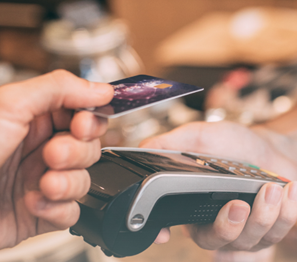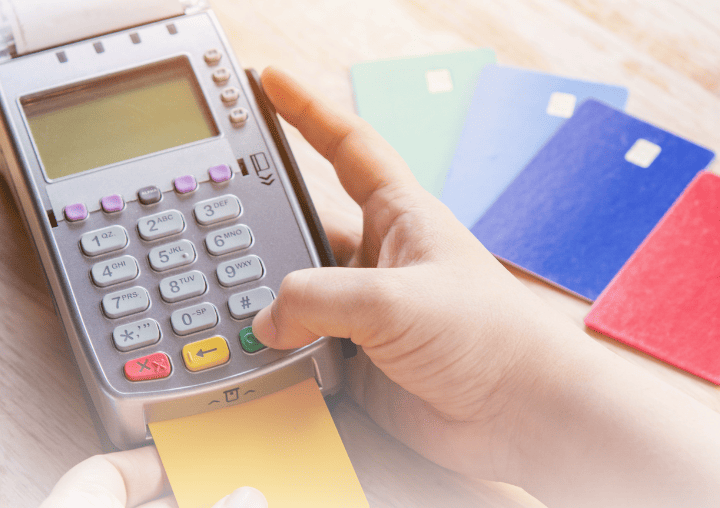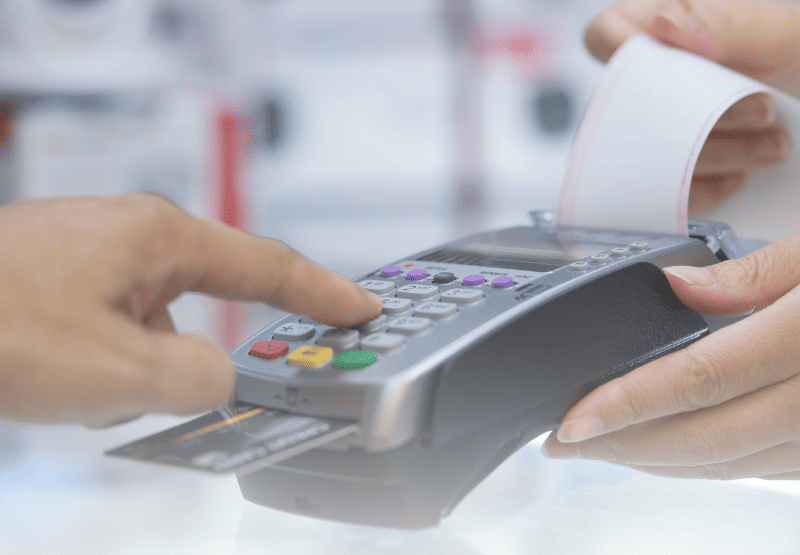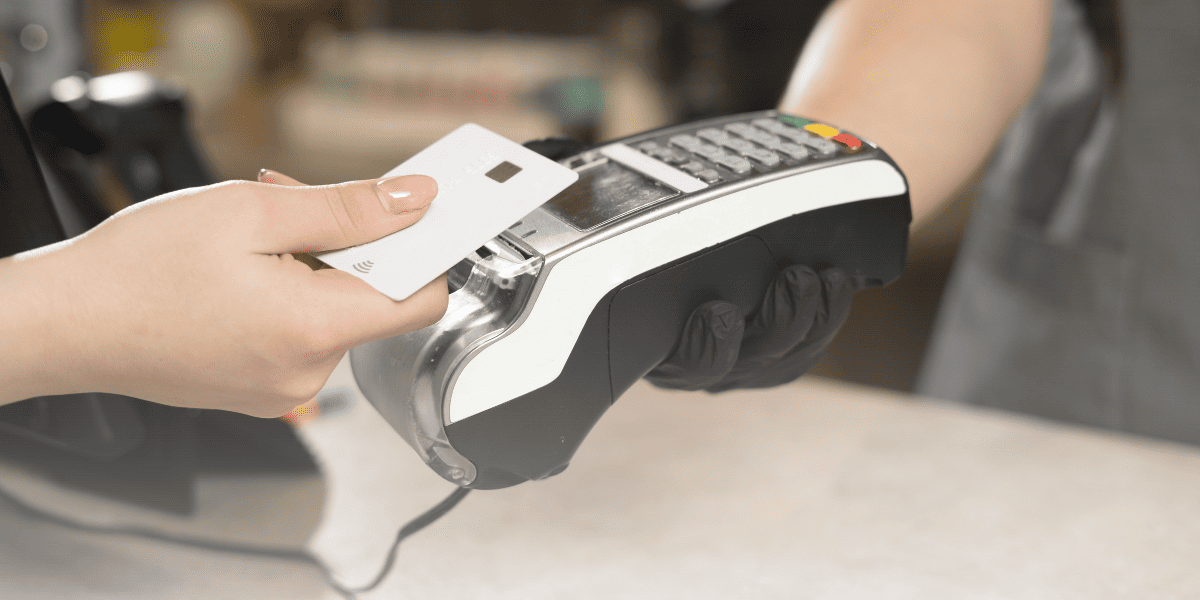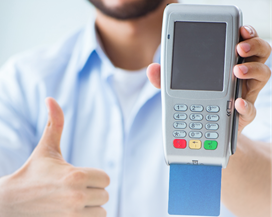Step 3: Select a Payment Gateway (if processing online transactions)
If you plan to accept online payments, you'll also need a payment gateway. This service works with your merchant account to process online transactions securely. Your choice of gateway should integrate smoothly with your existing website and shopping cart software.
Step 4: Purchase or Lease a Credit Card Machine
Decide whether to buy or lease your equipment. Buying can save you money in the long run, but leasing might reduce upfront costs. However, be cautious with lease terms, as they can sometimes lead to higher overall costs.
Step 5: Set Up and Test Your Equipment
Once you receive your credit card machine, set it up according to the manufacturer's instructions. Connect it to your network (if necessary), and test it to ensure it's working correctly. This may involve running a few test transactions.
Step 6: Train Your Staff
Train your staff on how to use the credit card machine. Ensure they know how to process transactions, handle declines, and troubleshoot basic issues.
Step 7: Stay Compliant
Ensure your business and equipment comply with industry standards, such as PCI DSS (Payment Card Industry Data Security Standard), to protect your customers' data and avoid potential fines.
Types of Credit Card Machines
- Traditional Terminals: These are the most common and are typically connected via a wired connection. They are reliable and secure, suitable for businesses with a physical location where transactions occur at a counter.
- Wireless and Mobile Readers: For businesses on the go, such as food trucks or outdoor markets, wireless and mobile readers provide flexibility and convenience. They connect via Wi-Fi or Bluetooth and can process payments anywhere there is internet connectivity.
- POS Systems and Smart Terminals: These terminals go beyond simple payment processing by offering additional functionalities like inventory management, employee scheduling, and customer relationship management. They are ideal for businesses looking for a comprehensive solution that integrates various operations.
- Mobile Swipers and Card Readers: Simple devices that attach to a smartphone or tablet, perfect for small or newly established businesses due to their affordability and ease of use.
Selecting a Payment Gateway
A payment gateway plays a crucial role in the seamless operation of online transactions by acting as the intermediary between your business, your customers, and financial institutions. Choosing the right payment gateway is essential for ensuring secure, efficient, and reliable payment processing. Here are detailed factors to consider, underpinned by industry expertise and best practices, to help you make an informed decision:
Security
Security is the cornerstone of any payment gateway. It is vital to choose a gateway that adheres to the highest security standards to protect sensitive customer data and transaction details. Look for features such as:
- PCI DSS Compliance: Ensures the gateway meets the Payment Card Industry Data Security Standards.
- Encryption and Tokenization: These technologies help safeguard data by encoding payment information and replacing sensitive data with unique identification symbols.
- Fraud Prevention Tools: Includes features like fraud scoring, CVV verification, and address verification services (AVS).
Compatibility
The payment gateway you choose should seamlessly integrate with your existing business systems. This includes your e-commerce platform, accounting software, and customer relationship management (CRM) systems. Integration compatibility helps streamline workflows, reduces manual data entry, and minimizes the chances of errors. Consider:
- API and Plug-ins: Check if the gateway offers easy-to-use APIs or ready-made plug-ins for your current platform.
- Mobile Compatibility: Ensure that the gateway functions smoothly on mobile devices, considering the increasing trend of mobile commerce.
Supported Payment Options
Your gateway should accommodate the diverse payment preferences of your customers. This includes traditional credit and debit cards, digital wallets like Apple Pay and Google Pay, and perhaps international payment methods if you serve customers globally. Offering multiple payment options can enhance customer satisfaction and help capture a broader market.
Pricing
Understanding the fee structure of payment gateways is critical to managing your business costs effectively. Payment gateways typically charge a combination of transaction fees, monthly fees, and sometimes setup fees. Consider the following:
- Transaction Fees: These are usually a percentage of the transaction amount plus a fixed fee.
- Monthly Fees: Some gateways charge monthly fees in return for lower transaction rates or additional features.
- No Hidden Costs: Ensure clarity about any additional fees such as chargebacks, international payments, or penalty fees for failing to meet a minimum number of transactions.
Customer Support
Reliable customer support is essential, especially when dealing with financial transactions. Issues need to be resolved quickly to maintain trust and ensure continuity in your business operations. Evaluate the payment gateway’s customer support on:
- Availability: Look for 24/7 support, especially if you operate in multiple time zones or handle a large volume of transactions.
- Support Channels: Multiple channels such as email, phone, and live chat can provide more accessible and convenient support.
- Resource Availability: Comprehensive guides, FAQs, and community forums can help solve common issues without needing direct contact.
Setting Up a Merchant Account
A merchant account is a crucial component for businesses that want to process credit card payments. It acts as an intermediary holding account for the money from card transactions before it is transferred to your business bank account. The setup process involves several key considerations that ensure the account meets your business needs in terms of cost, security, and customer support.
Implementation and Best Practices
Implementing a credit card machine and ensuring it operates smoothly is crucial for maintaining a secure and efficient payment environment. Here's a deeper look into the best practices for implementation and ongoing management of your payment system, emphasizing the need for expertise, experience, and trustworthiness in handling financial transactions.
1. Testing the System
Before going live with your credit card machine, it's imperative to conduct comprehensive testing. This process involves:
Functional Testing
Ensure that the device correctly processes all types of transactions, including sales, refunds, voids, and tips. Test each function to confirm that the terminal responds as expected.
Connectivity Testing
Verify that the terminal maintains a stable connection to your network, whether it's through Wi-Fi, Ethernet, or cellular data. Disruptions in connectivity can lead to failed transactions and a poor customer experience.
Security Testing
Check that all security features, such as encryption and tokenization, are functioning properly to protect cardholder data from unauthorized access.
2. Training Your Staff
Effective training is essential to ensure that your staff can handle all aspects of transaction processing confidently and competently. Key training areas should include:
Transaction Handling
Employees should understand how to process various types of transactions, manage transaction errors, and recognize signs of potential fraud.
Customer Service
Train staff on how to assist customers during the payment process, including handling sensitive information securely and addressing any questions customers may have about the transaction process.
Emergency Procedures
Ensure staff know what to do in case of a machine failure or a security breach, including who to contact and how to secure transaction data.
3. Regular Updates
Keeping your software and hardware updated is crucial for security and efficiency. Regular updates help protect against new threats and ensure that your system is compliant with the latest payment card industry standards (PCI DSS). Consider the following:
Software Updates
Install updates from your payment processing provider as soon as they become available. These updates often contain patches for security vulnerabilities that could be exploited by cybercriminals.
Hardware Maintenance
Regularly check your credit card machines for signs of tampering or damage. Routine maintenance checks can help extend the life of your devices and prevent hardware malfunctions during transactions.
4. Strategic Considerations
Choosing the right credit card machine involves more than just evaluating the cost; it affects how you manage your business operations. It influences customer experience, operational efficiency, and financial management. Factors to consider include:
Integration Capability
Ensure the machine integrates seamlessly with your other business systems, such as your POS system and accounting software. Integration can streamline operations and reduce the risk of errors.
Scalability
Consider whether the credit card machine and the accompanying service can grow with your business. You might need more advanced features or additional terminals as your business expands.
Key takeaways
- Determine the type of credit card machine that best fits your business model, whether it’s a traditional terminal, a mobile reader, or a comprehensive POS system. Consider your sales volume, mobility, and preferred payment types.
- Select a merchant account provider that offers competitive rates and excellent customer service. Compare various providers to find the best terms and conditions that suit your business’s financial needs.
- Properly set up and test your credit card machine to ensure it functions correctly before it goes live. This includes checking connectivity and security measures to protect customer data.
- Train your staff on how to use the new equipment effectively and ensure your business complies with relevant industry standards like PCI DSS to avoid potential fines and secure customer information.
